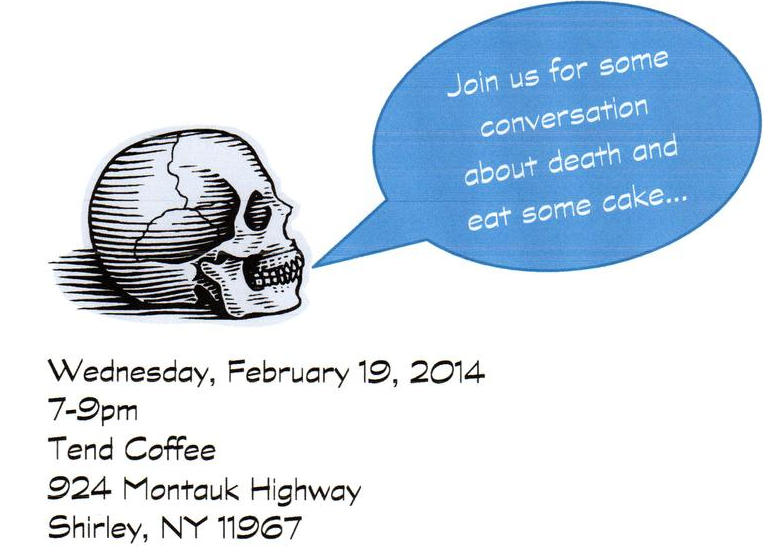 “The first time I texted James I was, frankly a little nervous. “How are you doing?” I typed, for want of a better question. “I’m doing alright, thanks for asking.” That was last month. By then James had been dead for almost eight months.” *
“The first time I texted James I was, frankly a little nervous. “How are you doing?” I typed, for want of a better question. “I’m doing alright, thanks for asking.” That was last month. By then James had been dead for almost eight months.” *
Once you died and you were gone. There was no in-between, no netherworld, no underworld. There could be a gravestone or an inscription on a park bench. Perhaps some fading photographs, a few letters or physical mementoes. In rare instances, you might leave behind a time capsule for future generations to discover.
That was yesterday. Today, more and more, your dead-self inhabits a technological twilight zone – a world that is neither fully virtual nor totally artificial. The dead, in short, are coming back to life and there could be hordes of them living in our houses and following us wherever we go in the future. The only question is whether or not we will choose to communicate with them.
Nowadays, if you’ve ever been online, you will likely leave a collection of tweets, posts, timelines, photographs, videos and perhaps voice recordings. But even these digital footprints may appear quaint in the more distant future. Why might this be so? The answer is a duality of demographic trends and technological advances. Let’s start with the demographics.
The children of the revolution are starting to die. The baby boomers that grew up in the shadows of the Second World War are fading fast and next up it’s the turn of those who grew up in the 1950s and 60s. These were the children that challenged authority and tore down barriers and norms. Numerically, there are a lot of this generation and what they did in life they are starting to do in death.They are challenging what happens to them and how they are remembered.
Traditional funerals, all cost, formality and morbidity are therefore being replaced with low-cost funerals, direct cremations, woodland burials and colourful parties. We are also starting to experience experiments concerning what is left behind, instances of which can be a little ‘trippy’.
If you die now, and especially if you’ve been a heavy user of social media, a vast legacy remains – or at least it does while the tech companies are still interested in you. Facebook pages persist after death. In fact going out a few decades there could be more people that are dead on Facebook than the living. Already, memorial pages can be set up (depending on privacy settings and legacy contacts) allowing friends and family to continue to post. Dead people even get birthday wishes and in some instances a form of competitive mourning kicks in. Interestingly, some posts to dead people even become quite confessional, presumably because some people think conversations with the dead are private. In the future, we might even see a kind of YouTube of the dead.
But things have started to get much weirder. James, cited earlier, is indeed departed, but his legacy has been a computer program that’s woven together countless hours of recordings made by James and turned into a ‘bot – but a ‘bot you can natter to as though James were still alive. This is not as unusual as you might think.
When 32-year-old Roman Mazurenko was killed by a car, his friend Eugenia Kuyda memorialised him as a chatbot. She asked friends and family to share old messages and fed them into a neural network built by developers at her AI start-up called Replika. You can buy him – or at least what his digital approximation has become – on Apple’s app store. Similarly, Eter9 is a social network that uses AI to learn from its users and create virtual selves, called “counterparts”, that mimic the user and lives on after they die. Or there’s Eterni.me, which scrapes interactions on social media to build up a digital approximation that knows what you “liked” on Facebook and perhaps knows what you’d still like if you weren’t dead.
This might make you think twice about leaving Alexa and other virtual assistants permanently on for the rest of your life. What exactly might the likes of Amazon, Apple and Google be doing with all that data? Life enhancing? Maybe. But maybe death defying too. More ambitious still are attempts to extract our daily thoughts directly from our brains, rather than scavenging our digital footprints. So far, brain-computer interfaces (BCIs) have been used to restore motor control in paralysed patients through surgically implanted electrodes, but one day BCIs may be used alongside non-invasive techniques to literally record and store what’s in our heads and, by implication, what’s inside the heads of others. Still not Sci-Fi enough for you? Well how about never dying in the first place?
We’ve seen significant progress in extending human lifespans over the last couple of centuries, although longevity has plateaued of late and may even fall in the future due to diet and sedentary lifestyles. Enter regenerative medicine, which has a quasi-philosophical and semi-religious activist wing called Transhumanism. Transhumanism seeks to end death altogether. One way to do this might be via Nano-bots injected into the blood (reminiscent of the 1966 sci-fi movie Fantastic Voyage). Or we might generically engineer future generations or ourselves, possibly adding ‘repair patches’ that reverse the molecular and cellular damage much in the same way that we ‘patch’ buggy computer code.
Maybe we should leave Transhumanism on the slab for the time being. Nevertheless, we do urgently need to decide how the digital afterlife industry is regulated. For example, should digital remains be treated with the same level of respect as physical remains? Should there should be laws relating to digital exhumation and what of the legal status of replicants? For instance, if our voices are being preserved who, if anyone, should be allowed access to our voice files and could commercial use of an auditory likeness ever be allowed?
At the Oxford Internet Institute, Carl Öhman studies the ethics of such situations. He points out that over the next 30-years, around 3 billion people will die. Most of these people will leave their digital remains in the hands of technology companies, who may be tempted to monetise these ‘assets.’ Given the recent history of privacy and security ‘outages’ from the likes of Facebook we should be concerned.
One of the threads running through the hit TV series Black Mirror is the idea of people living on after they’re dead. There’s also the idea that in the future we may be able to digitally share and store physical sensations. In one episode called ‘Black Museum’, for example, a prisoner on death row signs over the rights to his digital self, and is resurrected after his execution as a fully conscious hologram that visitors to the museum can torture. Or there’s an episode called ‘Be Right Back’ where a woman subscribes to a service that uses the online history of her dead fiancé to create a ‘bot that echoes his personality. But what starts off as a simple text-messaging app evolves into a sophisticated voicebot and is eventually embodied in a fully lifelike, look-a-like, robot replica.
Pure fantasy? We should perhaps be careful what we wish for. The terms and conditions of the Replika app mentioned earlier contain a somewhat chilling passage: People signing up to the service agree to “a perpetual, irrevocable, licence to copy, display, upload, perform, distribute, store, modify and otherwise use your user content.’ That’s a future you they are talking about. Sleep well.
* The Telegraph magazine (UK) 19 January 2019. ‘This young man died in April. So how did our writer have a conversation with him last month?’

